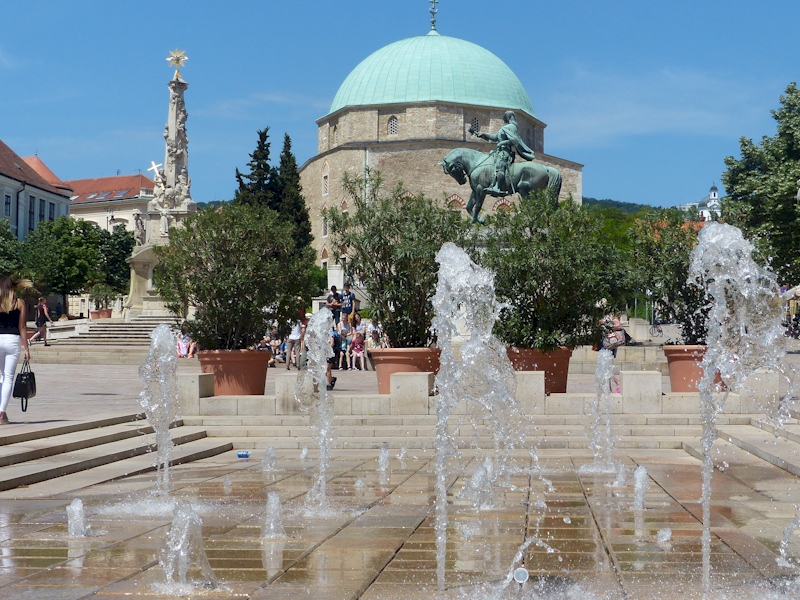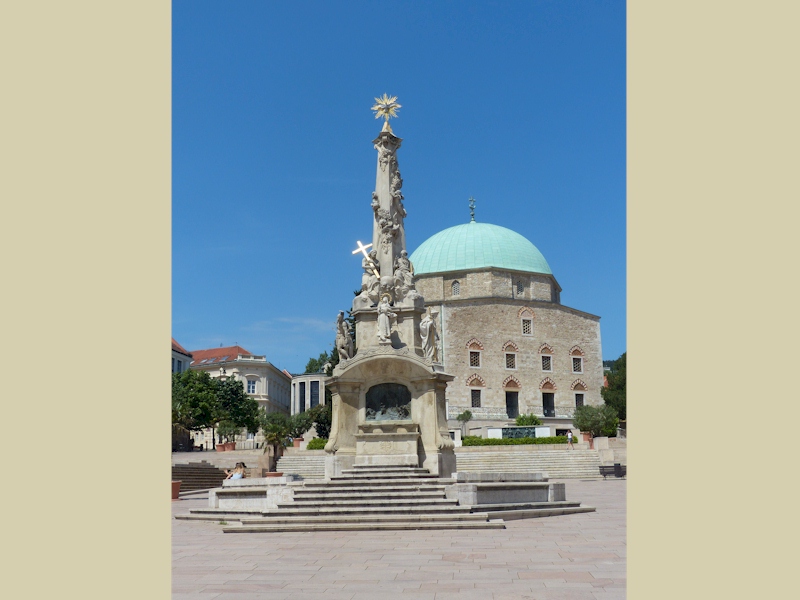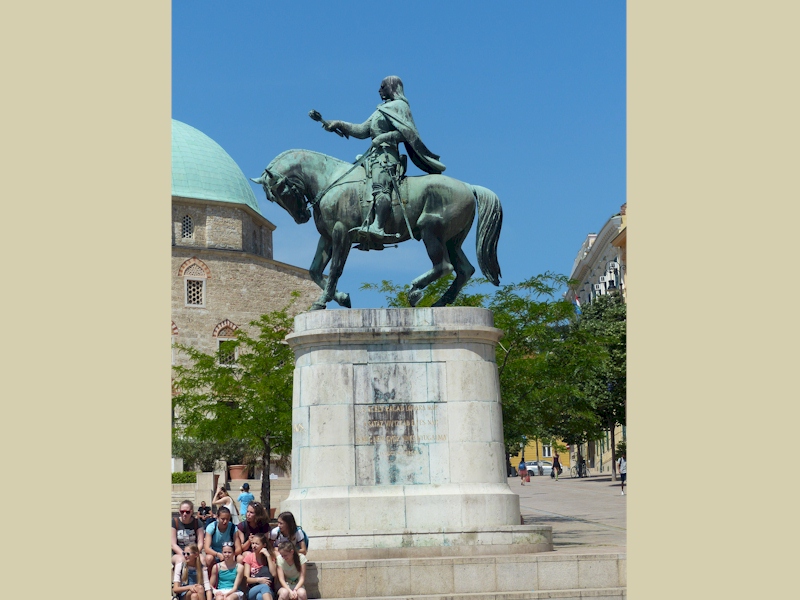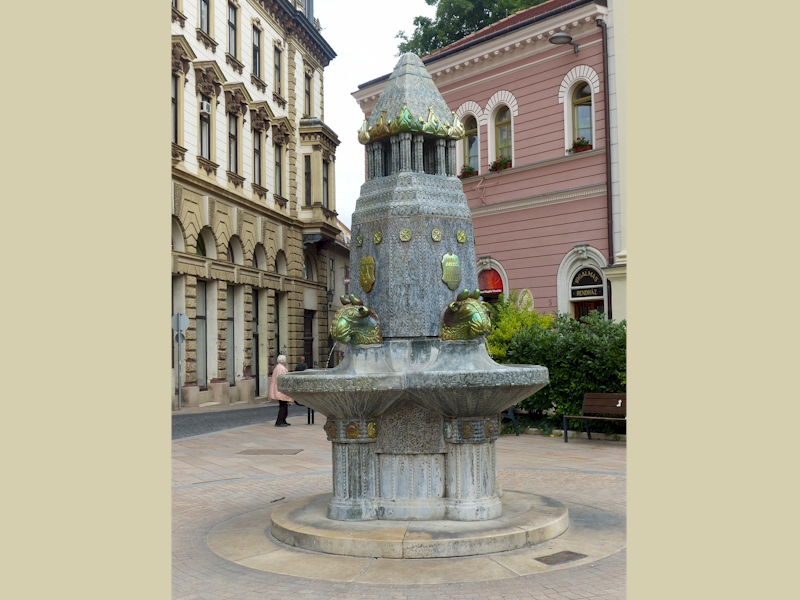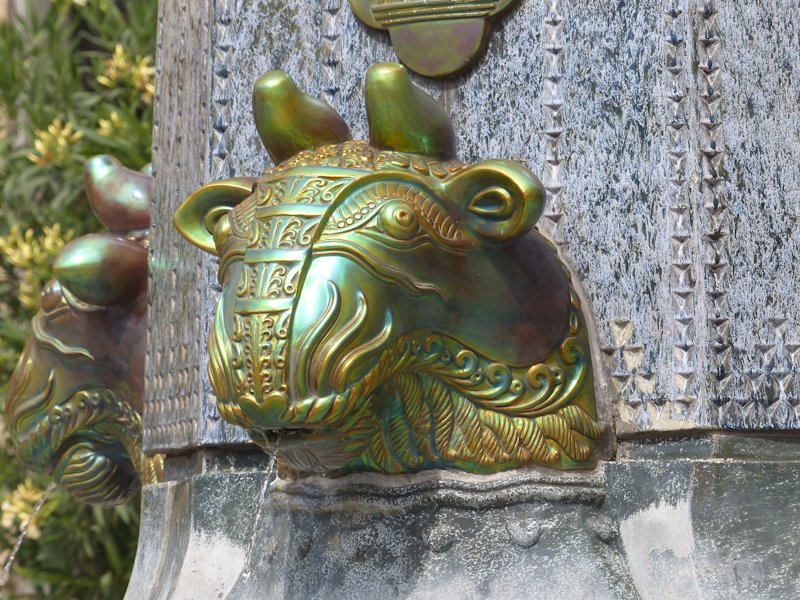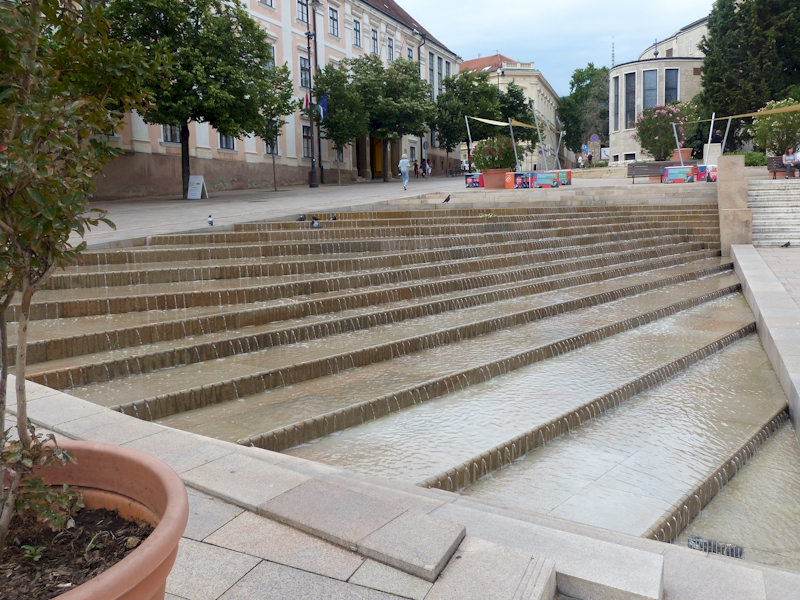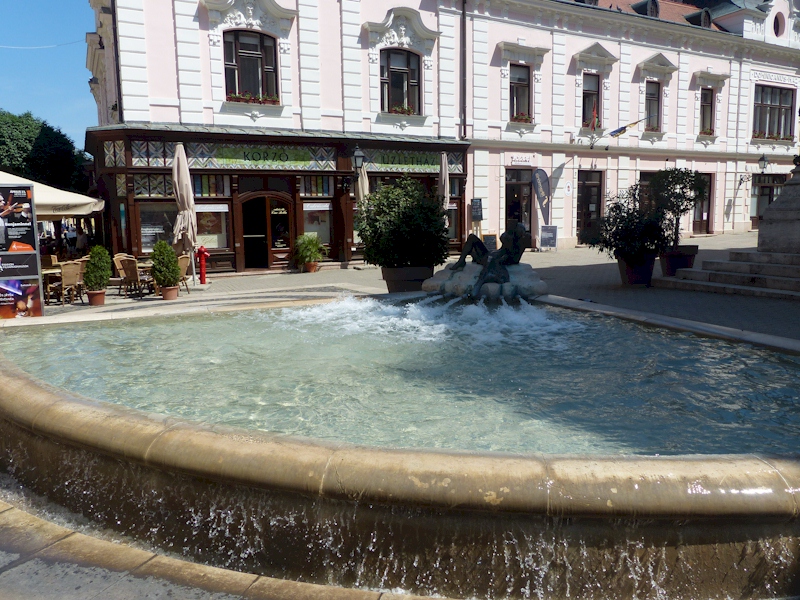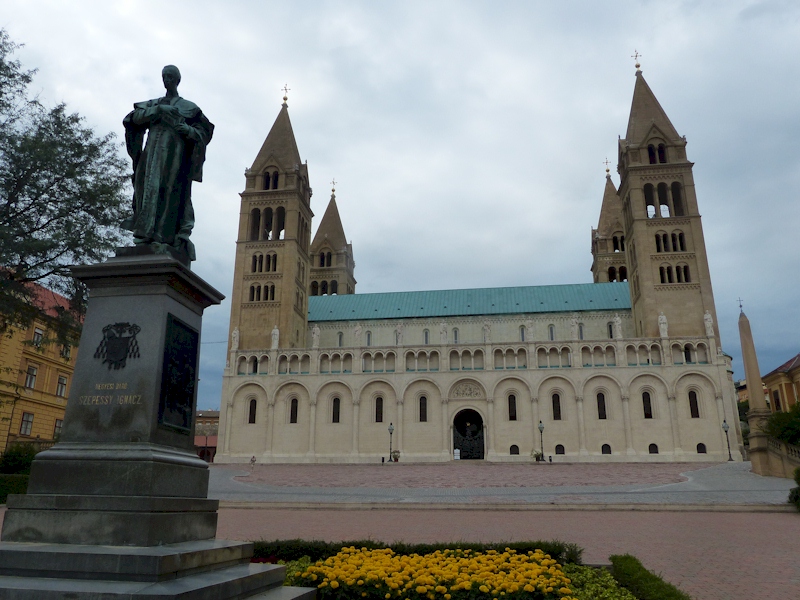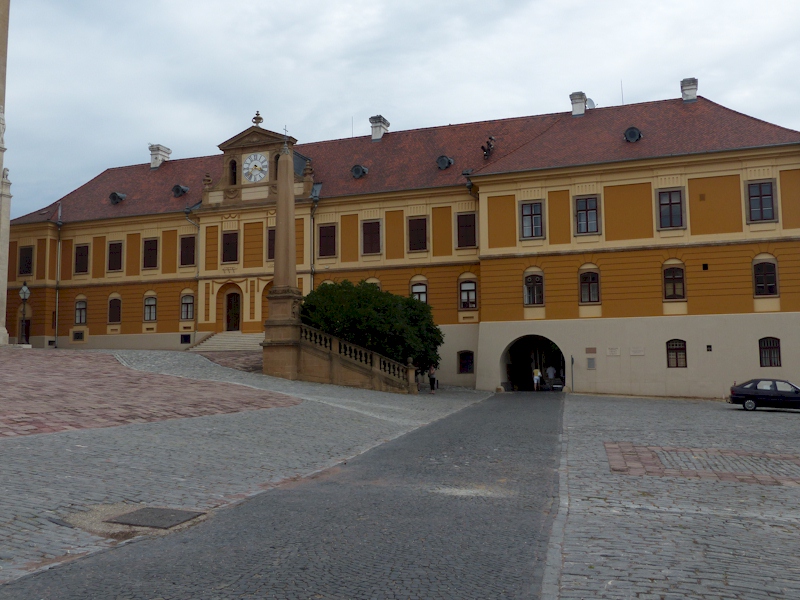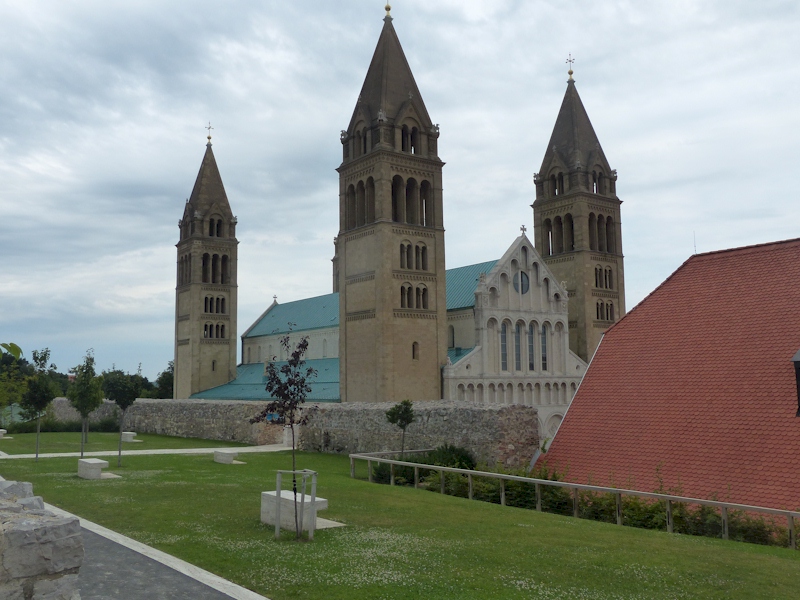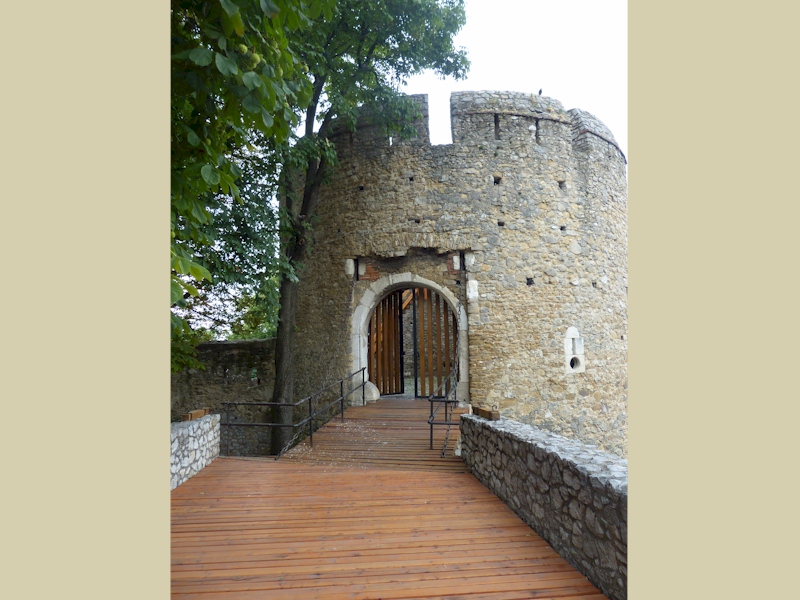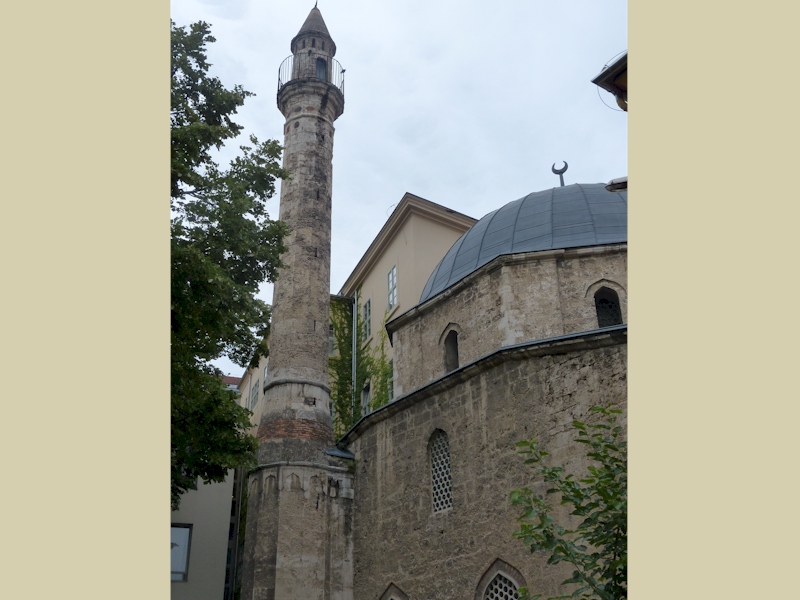|
Pécs (140,000 inhabitants), capital of the Baranya county, is located 50 km from Magyarlukafa. The city is attractively situated on the flanks of the Mecsek mountains (+ 600 metres)
and has a lot of tourist assets, amongst other things because of its rich history.
|
|
Dating back to the late Roman period Pécs boasts an Early Christian Necropolis with mural paintings and richly decorated tombs. Sixteen of these tombs are listed as World Heritage by Unesco and are accessible to the public.
|
|
The medieval Pécs is mainly to be found around the cathedral, the largest romanesque church in Hungary. It is situated in a spacious square and next to the Bishop's Palace.
To the north of the church we can walk a section of the medieval walls and a bit more to the west we'll find the Barbican, a beautifully restored round gate tower from the 15th century.
|
|
From 1543 to 1686 Pécs was under Ottoman rule and contemporary travellers declared the city could compare to Istanbul. Two beautiful mosques still remain from that period.
The smallest is the Jakováli Hasszán mosque with its minaret, which is the best conserved historical mosque in Hungary. Therefore the inside is well worth visiting too.
|
|
However, the largest mosque from the Ottoman era is located in the main (and most beautiful) square of Pécs: the Széchenyi tér. This pedestrian square will appeal to everbody because of its vastness,
the special location (upsloping towards the Mecsek mountains), its nice and well-tended benches and water features and most certainly because of the beautiful buildings that are situated in it.
The square is dominated by the mosque of Gázi Kászim pasa and its imposing dome. Somewhat lower in the square is situated a Trinity statue from 1714 and a fine equestrian statue representing Hunyadi János
(victor of an important battle against the Ottomans in 1456).
Down at the southside of the square we can admire the colourful and intriguing Zsolnay well (1912), a gift from the Zsolnay family to the city of Pécs.
At the time, the Zsolnay porcelain of Pécs was world-famous.
|
|
Descending from the the Széchenyi square another beautiful and large square will appear at our left: the Kossuth tér.
At the end of the square is located the synagogue, a striking building from 1869.
|
|
If we don't leave the Széchenyi square in southern direction, but instead turn left earlier, we enter the Király utca, a pleasant pedestrian shopping street.
The street has a special atmosphere because of the many stately buildings from the end of the 19th, beginning of the 20th century, such as the National Theatre (1895).
|
More in Pécs:
-
Vasarely museum. Victor Vasarely was the most important representative of the op-art movement.
-
Csontváry museum. Kosztka Tivadar Csontváry was a Hungarian painter classified most often into expressionism.
-
Zoo. The Pécsi Állatkert és Akvárium-Terrárium is situated in the Mecsek mountains, north of the city.
-
Walks into the Mecsek mountains. In the Mecsek moutains there are many way-marked walking routes.
|



